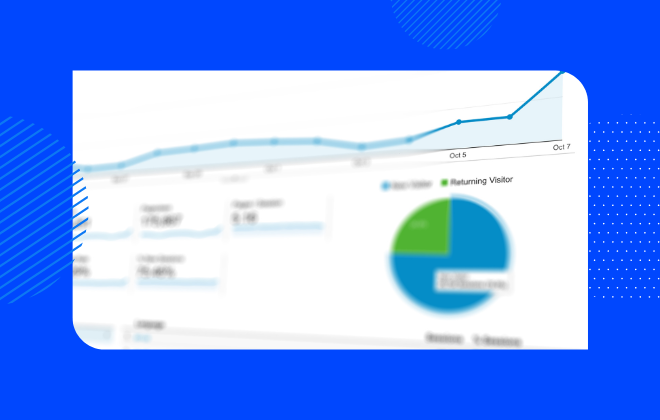In this article, we’ll explore the importance of SEO analytics and how to use them to improve your search strategy. We’ll cover everything from keyword research and on-page optimization to user behaviour analysis and competitor research. By the end of this article, you’ll have a solid understanding of how to use analytics to drive more organic traffic to your website and improve your search rankings.
SEO Analytics: What You Need to Know
SEO analytics involves using data to analyze the performance of your website and its content. This can include everything from tracking keyword rankings and organic traffic to analyzing user behaviour and conversion rates. By collecting and analyzing this data, you can gain insights into what’s working and what’s not. This will allow you to make data-driven decisions about your SEO strategy.
Some of the key metrics you should be tracking for SEO analytics include:
- Search engine rankings: The position of your website in search engine results pages (SERPs) for your target keywords.
- Organic traffic: The number of visitors to your website that come from organic search results.
- Conversion rates: The percentage of visitors to your website that take a desired action. This action can be anything from making a purchase or filling out a form.
- Bounce rate: The percentage of visitors to your website that leave after viewing only one page.
- Time on page: The average amount of time visitors spend on a page before leaving.
- Pages per session: The average number of pages visitors view during a single session on your website.
By tracking these metrics, you can gain a better understanding of how your website is performing and identify areas for improvement.
Keyword Research: Finding the Right Keywords
Keyword research is a critical component of SEO. It involves identifying the keywords and phrases that your target audience is searching for and optimizing your content to rank for those keywords. This is important because if your website is not ranking for the right keywords, you may be missing out on potential traffic and leads.
One of the best ways to conduct keyword research is to use keyword research tools. These tools allow you to enter a keyword and generate a list of related keywords. They also include important metrics such as search volume and competition level.
Some popular keyword research tools include:
- Google Keyword Planner: This is a free tool that allows you to research keywords and see their search volume and competition level.
- SEMrush: This is a paid tool that offers in-depth keyword research and analysis, along with a range of other SEO analytics features.
- Ahrefs: This is another paid tool that offers advanced keyword research and analysis, as well as robust suite other SEO features.
Once you’ve identified your target keywords, it’s important to incorporate them into your content in a natural and strategic way. This includes optimizing your title tags, meta descriptions, and on-page content to include your target keywords.
On-Page Optimization: Making Your Content SEO-Friendly
On-page optimization involves optimizing your website’s content and structure to make it more SEO-friendly. This includes optimizing your title tags, meta descriptions, and on-page content to include your target keywords. It also involves making sure your website is structured in a way that makes it easy for search engines to crawl and index your content.
Some key on-page optimization factors include:
- Title tags: The title of your page, which appears in the search engine results pages (SERPs). It’s important to include your target keyword in your title tag to help search engines understand what your page is about.
- Meta descriptions: The meta description is a brief summary of your page. It appears below the title tag in the search results. It’s important to include your target keyword and a compelling description of your content in your meta description to encourage users to click through to your website.
- Header tags: Header tags are used to structure your content and make it easier for users to read. They also provide important signals to search engines about the structure of your content.
- Keyword placement: It’s important to include your target keyword throughout your content, including in the first paragraph, subheadings, and throughout the body of your content. However, it’s important to use keywords in a natural and strategic way, rather than stuffing them unnaturally into your content.
- Images: Images can be optimized for SEO by including descriptive alt tags and file names that include your target keywords.
- Mobile optimization: With more and more users accessing the internet on mobile devices, it’s important to ensure that your website is optimized for mobile. This includes ensuring that your website is responsive and that your content is easily accessible and readable on mobile devices.
Off-Page Optimization: Building Backlinks
Off-page optimization involves building backlinks to your website from other high-quality websites. Backlinks are important because they signal to search engines that other websites consider your content to be valuable and worth linking to.
Some key off-page optimization strategies include:
- Guest blogging: Writing guest posts for other websites in your industry can help you build backlinks and increase your visibility online.
- Broken link building: This involves finding broken links on other websites and offering to replace them with links to your own content.
- Social media: Sharing your content on social media can help you build backlinks and increase your visibility online.
Competitor Analysis: Analyzing Your Competitors
Analyzing your competitors can provide valuable insights into what’s working in your industry and help you identify areas where you can improve your own SEO strategy. This can include analyzing your competitors’ content, backlinks, and social media activity.
Some key competitor analysis strategies include:
- Identifying your top competitors: Use tools like SEMrush or Ahrefs to identify your top competitors in the search results.
- Analyzing their content: Analyze your competitors’ content to see what topics they’re covering and what keywords they’re targeting.
- Analyzing their backlinks: Use tools like Ahrefs to analyze your competitors’ backlinks and identify potential opportunities for building your own backlinks.
- Analyzing their social media activity: Analyze your competitors’ social media activity to see what types of content are resonating with their audience and what engagement strategies they’re using.
Performance Metrics: Tracking Your Progress
Tracking your progress is essential to measuring the success of your SEO strategy. This includes tracking key performance metrics like search engine rankings, organic traffic, and conversion rates, as well as monitoring your website’s performance over time.
Some key performance metrics to track with SEO analytics include:
- Search engine rankings: Monitor your search engine rankings for your target keywords to see if your SEO strategy is having an impact.
- Organic traffic: Track your organic traffic over time to see if it’s increasing or decreasing.
- Conversion rates: Monitor your conversion rates over time to see if your website is effectively converting visitors into leads or customers.
- Bounce rate: Monitor your website’s bounce rate over time to see if users are leaving your website after viewing only one page.
- Time on page: Track your website’s average time on page to see if users are engaging with your content.
- Pages per session: Monitor your website’s pages per session metric to see if users are exploring your website and engaging with your content.
Web Analytics
Web analytics tools are essential for tracking and analyzing your website’s performance over time. These tools provide insights into your website’s traffic, user behaviour, and other important metrics that can help you make data-driven decisions about your SEO strategy.
Some key web analytics tools to consider include:
- Google Analytics: Google Analytics is a free web analytics tool that provides insights into your website’s traffic, user behaviour, and other key metrics.
- SEMrush: SEMrush is a paid SEO tool that provides insights into your website’s traffic, keyword rankings, and backlinks, as well as tools for competitor analysis and keyword research.
- Ahrefs: Ahrefs is a paid SEO tool that provides insights into your website’s backlinks, keyword rankings, and content performance, as well as tools for competitor analysis and keyword research.
Search Algorithm Updates: Staying Up-to-Date
Search engines are constantly updating their algorithms to improve the relevance and quality of their search results. Staying up-to-date with these updates and making adjustments to your SEO strategy as needed is essential for maintaining and improving your search engine rankings.
Some recent search algorithm updates to be aware of include:
- Bert: Google’s Bert update, which stands for Bidirectional Encoder Representations from Transformers, was introduced in 2019 and focused on improving the way Google understands natural language queries1.
- Core updates: Google releases several core updates each year, which are broad algorithm updates that can have a significant impact on search engine rankings2.
- Mobile-first indexing: Google has been gradually rolling out mobile-first indexing, which means that the mobile version of your website is now the primary version that Google uses for indexing and ranking3.
Local SEO: Optimizing for Local Search
If you run a local business, optimizing your website for local search is essential for attracting local customers. This includes optimizing your website for local keywords, building local backlinks, and ensuring that your business information is consistent and up-to-date across all online directories and platforms.
Some key local SEO strategies to consider include:
- Creating a Google My Business listing: Google My Business is a free tool that allows you to create a listing for your business on Google, which can appear in the local pack and on Google Maps.
- Optimizing your website for local keywords: Include local keywords in your website’s content and meta tags to help search engines understand that your website is relevant to local search queries.
- Building local backlinks: Building backlinks from other local businesses and directories can help improve your website’s visibility in local search results.
Ensuring consistent business information: Make sure that your business information, such as your name, address, and phone number, is consistent and up-to-date across all online directories and platforms.
Conclusion
SEO analytics is an essential part of any successful SEO strategy. By using SEO analytics tools to track your performance, analyzing your competitors, and staying up-to-date with search algorithm updates, you can improve your search engine rankings and attract more organic traffic to your website. Remember to optimize your content for both users and search engines, build high-quality backlinks, and stay up-to-date with the latest SEO trends and best practices. And if you need help with your SEO strategy, don’t hesitate to reach out to an agency like Datawyze to learn more.
References:
1. Understanding searches better than ever before – Pandu Nayak (Vice President, Search, Google)
2. Google Search’s core updates and your website – Google Search Central
3. Mobile site and mobile-first indexing best practices – Google Search Central





